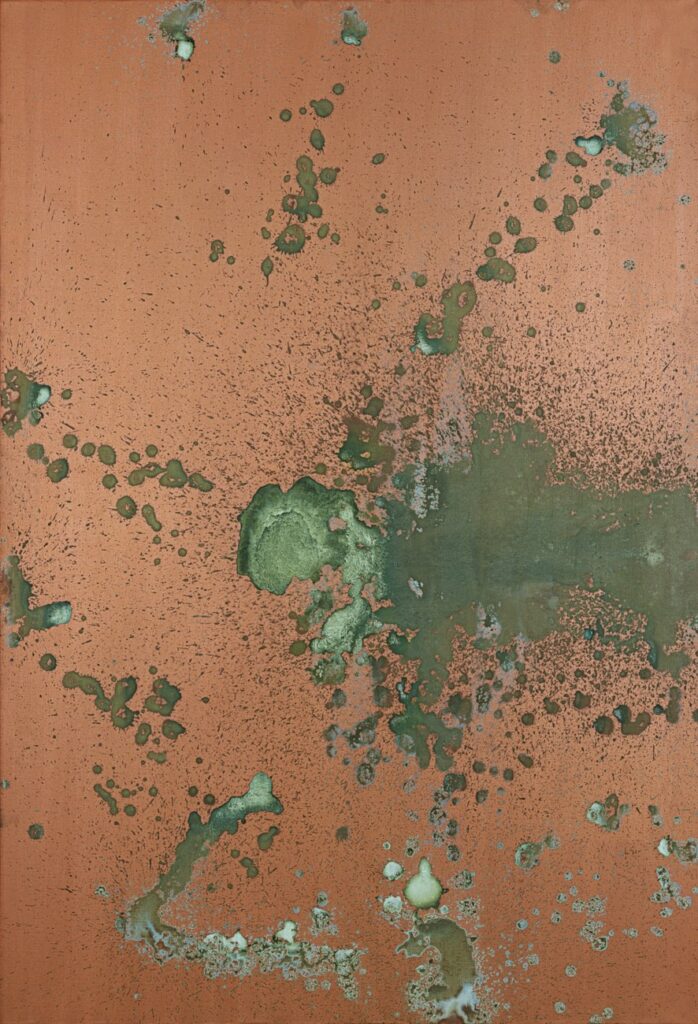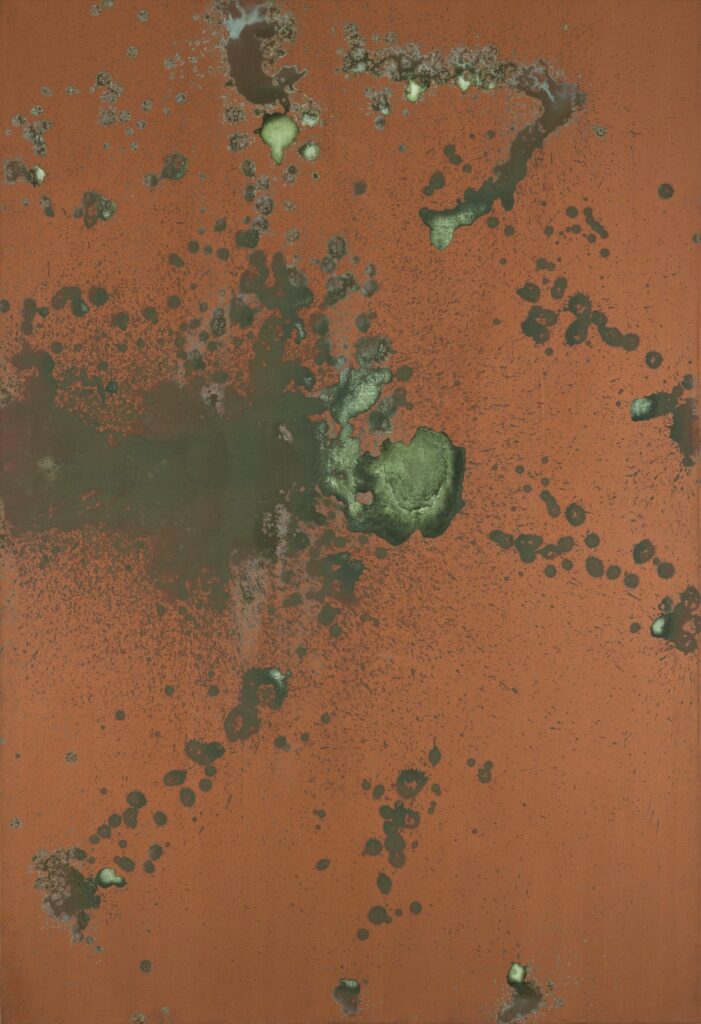
I’ve heard in the long run they stink, but then, so does Versailles. I do like Warhol’s Oxidation Paintings, though. I like how they went from Piss Paintings to Oxidation Paintings as their critical discourse expanded and their market value increased. How a taxonomy developed, where Piss Paintings are just the ones with piss on gesso.
I like how my sporadic attempts to research the Oxidation Paintings reveals that almost every piece of writing about them longer than a caption is the same. They use the same journal quotes about Ronnie Cutrone and vitamin B; the same Pollock, Duchamp, Mapplethorpe references; the same washed up comeback narrative, recovering from the same celebrity portraitist dismissals.
Is this all there is? Or is this all there is that keeps the market open and prices up?
Skarstedt has a show of Oxidation Paintings up right now in Chelsea that includes the painting above, which sold at Christie’s in 2008 for $1.899m, more than 50% above its high estimate. So I guess the text is working?
From the press release: “[The show] offers a glimpse into a moment when Warhol, often perceived as emotionally remote or mechanically detached, engaged with the most intimate forms of mark-making. And it reminds us that beneath the surface, there is always a question of presence, of process, and of transformation.”

Indeed, how were these paintings actually made? If it’s as straightforward as they seem, why did Warhol say it was so difficult? Do vitamins or other intake really affect the color outcome? Has someone tried to replicate these? And how does a painting made on the floor get a top and a bottom? Because Skarstedt is showing this one turned the other way, as Phillips did in 2022 .
[Morning after update:] greg.org hero Christian Oldham reminds us that Sturtevant had a great story about Warhol asking her to make one of his piss paintings, and she said, “Andy I don’t have the right equipment.” The rest I’ll leave to her.
